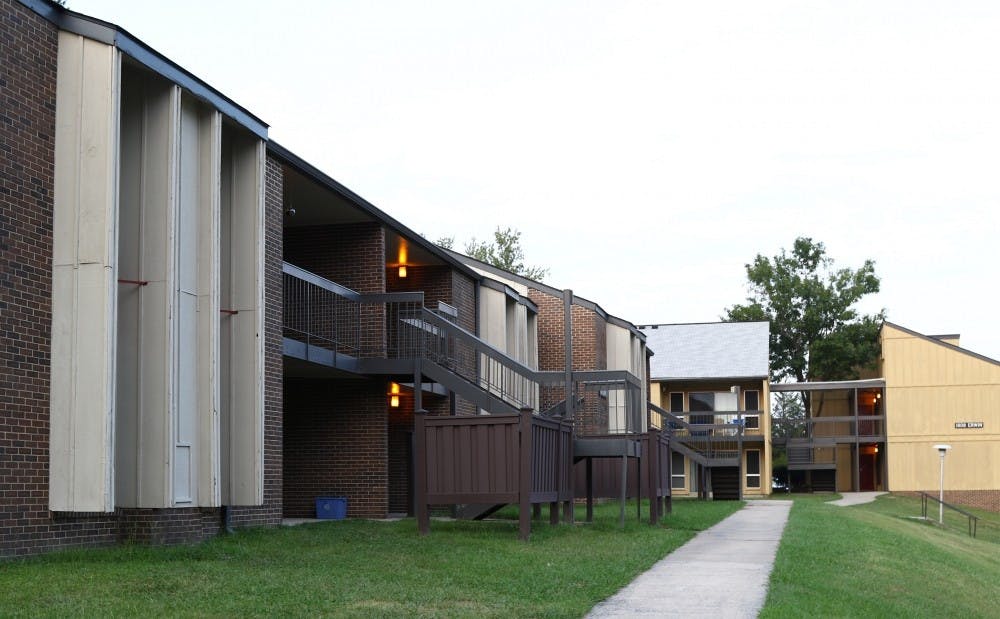Duke’s Central Campus has been abandoned since 2019, and the University has since lacked a clear vision for its future. Now, administration is looking to pave the way for its redevelopment.
In April, Duke filed a Zoning Map Change application to rezone 10 parcels of land near Central Campus to the “University and College with a Development Plan” (UC(D)) designation to “allow for future college and institutional uses.”
The Durham Planning Council advanced this proposal to the City Council April 9 with a favorable recommendation. The proposal is expected to be heard by the City Council in the fall, per a May 22 email to The Chronicle from Adem Gusa, director of planning and design for the University.
Prior to its demolition in 2019, Central Campus was used for student housing. It initially housed graduate students and students with families and later served as a hub for selective living groups and Greek life organizations, accommodating up to 1,100 students.
Eventually, the buildings began to suffer from mold problems, leading campus administrators to motion for their demolition. Duke built Hollows Quad and purchased the apartments at 300 Swift to address the newfound housing shortage and abandoned Central Campus.
In 2018, Duke’s Board of Trustees assembled a Central Campus Task Force to generate development plans for the land, but the University had other financial commitments and did not pursue any “immediate development.” The Task Force only convened for one year.
Since then, the future of Central Campus has remained unclear.
Per the city of Durham’s website, every parcel of land has a zoning designation that regulates surrounding issues including how the land may be used and what type of structures are permitted.
Most of Central Campus is already zoned UC(D). If the latest proposal is approved by the City Council, the 10 additional parcels — which Duke already owns — would also fall under this designation, allowing them to be included in future development planning.
However, the University “has no current plans to develop Central Campus,” according to the May 22 email from Gusa.
Duke’s rezoning plan met eight of the 22 applicable policies outlined in the Durham-Chapel Hill-Carrboro Metropolitan Planning Organization’s Comprehensive Transportation Plan. This low compliance is largely due to an unfulfilled request from the Department of Transportation to include plans for a 10-foot shared bicycle and pedestrian path, which makes the application noncompliant with the Durham Unified Ordinance.
Duke’s application also falls short of providing sufficient commitments to tree coverage, stormwater and green infrastructure as outlined in the new Comprehensive Plan. It does, however, meet policies surrounding “commitments to additional open space, [preserving] some of the existing historical structures and adhering to environmental and [Americans with Disabilities Act] requirements at site plan.”
Despite the shortcomings, the Durham Planning Commission voted favorably on the application with an eight-to-one vote during the April 9 meeting. Neil Ghosh, a land use and zoning attorney who represented Duke in front of the council, said that the majority of previously voiced concerns were over the application’s omission of the 10-foot pedestrian and bicycle path.
Ghosh said during the meeting that Duke would be open to suggestions to incorporate ideas similar to the Department of Transportation’s proposed pedestrian and bicycle path but would not be revising the current application to accommodate the request.
At the same meeting, the Planning Commission also heard another Zoning Map Change application filed by Duke pertaining to rezoning three parcels near East Campus to UC(D). This did not receive approval of the council and was defeated in an eight-to-one vote.
Several community members gave public comments voicing concerns with this proposal due to the University’s failure to address sewage water disposal and increased traffic in the neighborhood. According to Gusa, the University is “reviewing its options” pertaining to this application.
Editor's note: A previous version of the article reported the defeat of Duke's proposal to rezone three parcels near East Campus as a five-to-four vote instead of the correct eight-to-one count. The Chronicle regrets the error.
Get The Chronicle straight to your inbox
Sign up for our weekly newsletter. Cancel at any time.
Ana Despa is a Pratt sophomore and an associate news editor for the news department.

